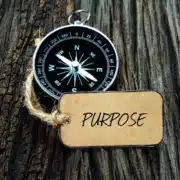Your Work Culture; Is it a Match or No-Match?
When I was 19 years old I worked as a Mailhandler for the Post Office in Somerville, MA. It was a way to earn some extra cash while I was in college. I was hired as a “casual” employee; someone who does not earn benefits and gets little, if any, attention.
I vividly remember my first day on the job. I was introduced to the veteran Mailhandler. He gave me a quick tour around the building and told me our job was to uload the trucks and deliver the mail to the mail carriers.
I was young, eager and ready to get to work. Our job began when the trucks pulled in. They would deliver incoming mail and our job was to unload them. I enthusiastically waited for the first truck. Within the first 30 minutes, it came. I followed my veteran colleague, took the postcon off the truck, shadowed his direction and delivered the mail according to the identified carrier. Whew! I did it. And it took me all of four minutes to complete.
I then proceeded to get another postcon and as I scurried to get on the truck and repeat this same process my comrade tapped me on my shoulder and said quite intently, “Slow the F*** down!”
I learned and was told quickly that there was a pace at the Post Office. There was a clear expectation of how fast we were going to get this work done and it was not at rocket speed; rather the slower you worked the better.
I also learned that in between truck deliveries there was really nothing else we were “tasked” to do. Now I am not saying that there wasn’t anything else we could do, we were just “bound” in our specific tasks as Mailhandlers. We were not permitted to cross crafts. We could not encroach on another person’s duties; the Post Office culture became evident and clear.
I was 19 years old. I was a college student earning money to live. The Post Office paid well and although it was counter to my work style and preference I decided I was not going to take on the climate and culture of the United States Postal Service.
So, I decided to come in and dutifully do my work, each day, unloading three truck deliveries to the respective carriers. This probably took me about one-hour tops for my eight-hour shift. No one seemed to mind that I would find a quiet space for the other 7 hours of my shift and sit on a stool and read.
Now don’t get me wrong. I have family members and friends who do and have worked for the USPS and I hold them with the highest regard and respect. I, personally, could not at 19 years of age, influence the culture that existed at the Post Office. What I did learn is that there is tremendous power in work cultures. There is a tone that gets established. I also learned that work culture can impact your sense of fulfillment and satisfaction, your level of effectiveness, your ability to contribute, and your physical and mental health.
So, what exactly is work culture? Culture can feel elusive however it is best described as the personality and the traits associated within your workplace. The ingredients that make up a work culture include the values, beliefs, attitudes, communication styles, relationships, interactions and the rituals and traditions. Culture is often that “vibe” you feel and the energy that is experienced.
Here are some areas to consider when determining if your work culture is your best work match.
Value alignment and confirmation
Do the values in your work place line up with yours? Many companies clearly identify and speak to their core values that make up their work culture.
Often companies will interview candidates and determine if the candidate will be a fit for their culture. Your job is to see if the values presented and the values in action at your company are aligned with yours.
Zappos promotes that bulding open and honest communication amongst the team is a core value of the company. If that is an important element for you then you would want to see if your experience confirms and supports this value in your workplace. Is it okay to be frank and honest with your team? Is open communication truly honored, promoted and respected? If yes, then there is a match. If not, there might not be a match.
You “own” the culture
When your work culture promotes values that resonate with you, your sense of fulfillment at the workplace increases. Value alignment breeds greater enjoyment and you take on that culture and adopt it as your own.
REI says that their employees, “give life to their purpose”. If you embrace the values, you become a leader in promoting the healthy part of your company’s culture.
If your workplace embraces change and you offer suggestions that are taken seriously, your proposals will likely continue. You will also convey that message to other employees by either modeling it and/or conveying that value directly. When you feel connected and part of creating the work culture that illustrates a work match.
You perform better
Value alignment paired with culture ownership will inevitably lead to improved performance. When you are working in a space that feels right, even viscerally, there is a flow. When there is a flow, you just perform better.
According to Gallup, research has consistently shown that “an engaged culture positively affects performance.” Greater work performance marks a match.
Although the Post Office proved to be a mismatch, it provided me with some useful information moving forward in my career path. You will determine if you and your work culture are meant to be together. Just like in relationships, we are not meant to be with everyone. The same applies for our workplaces; some are harmonious and a clear match while others are not. As a former client of mine said quite eloquently that she developed the courage to walk away from an opportunity or potential opportunity…for a reason that wasn’t tangible like pay or role responsibilities. It was just not a fit.













